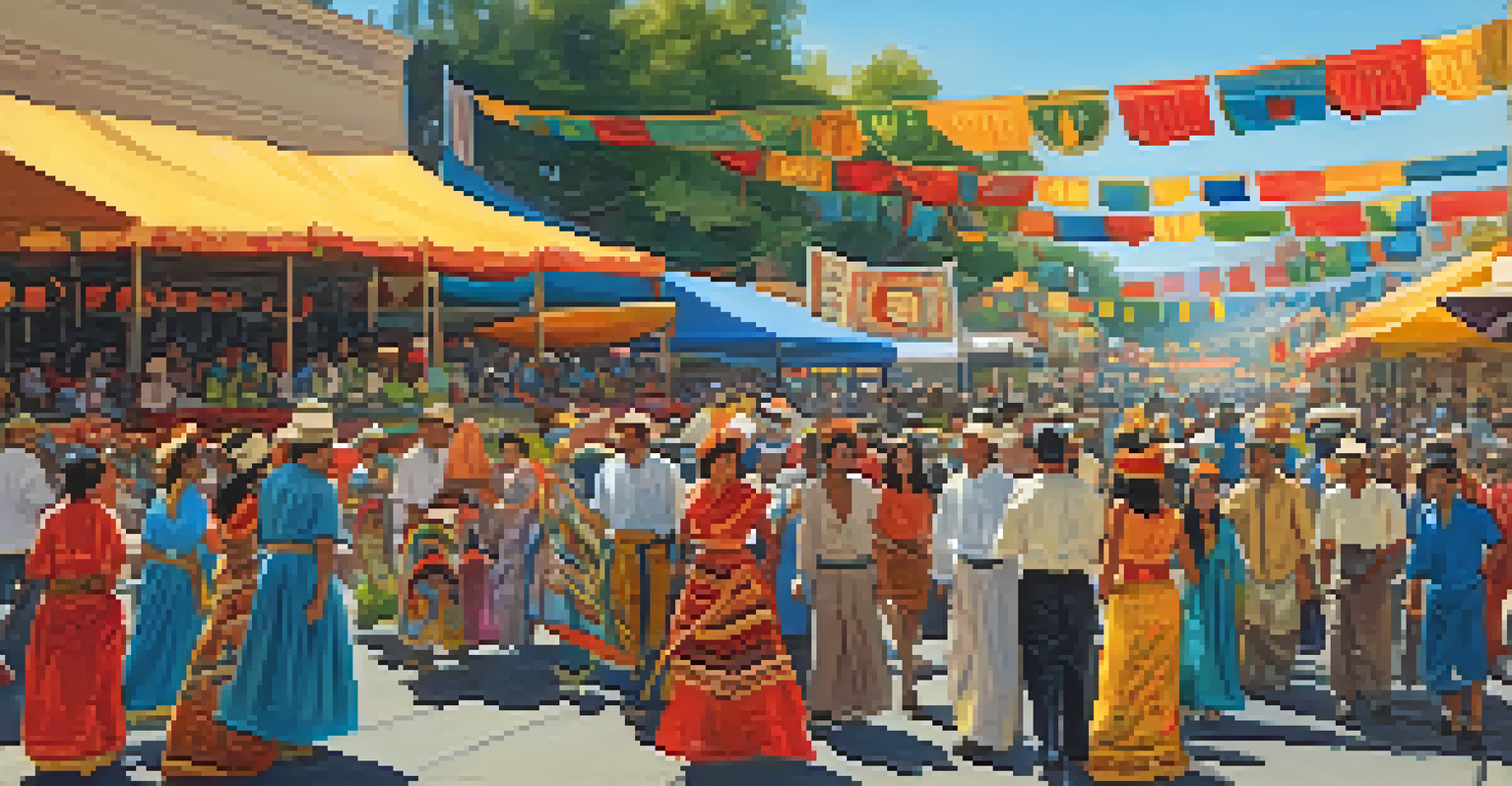Sacramento's Founding: Celebrating 170 Years of History

A Glimpse into Sacramento's Early Days
Sacramento, the capital of California, has a rich history that dates back to 1849 when it was founded during the Gold Rush. Initially inhabited by the Nisenan tribe, the area transformed quickly as settlers flocked in search of fortune. This bustling activity led to the establishment of a trading post, which would become the heart of the city.
History is not a burden on the memory but an illumination of the soul.
The confluence of the Sacramento and American Rivers made this location ideal for trade and transportation. The rivers offered a crucial route for goods and people, which contributed significantly to the city’s growth. Merchants, miners, and entrepreneurs set up camp, laying the groundwork for what would become a vibrant urban center.
As Sacramento's population surged, so did its need for infrastructure and services. The city's founders worked tirelessly to create a community that could support the influx of new residents. In just a few short years, what started as a modest settlement blossomed into a bustling city with a diverse population.
The Role of the Gold Rush in Shaping Sacramento
The California Gold Rush was a game-changer for Sacramento, transforming it into a gateway for hopeful prospectors. As news of gold discoveries spread, thousands of people poured into the area, bringing with them a spirit of adventure and opportunity. Sacramento quickly became the primary supply hub for miners heading to the Sierra Nevada mountains.

This massive influx of people not only increased the population but also diversified the economy. Businesses sprang up overnight, from saloons to general stores, catering to the needs of miners and their families. The city’s economy became a melting pot of cultures, driven by the ambition and dreams of its residents.
Sacramento's Rich Historical Roots
Founded during the Gold Rush in 1849, Sacramento quickly evolved from a modest settlement into a thriving city due to its strategic location at the confluence of two rivers.
Sacramento’s role during the Gold Rush solidified its importance in California’s history. It was not just a stopover but a thriving community that set the stage for further development and growth in the years to come. The legacy of the Gold Rush continues to influence Sacramento’s identity today.
Establishing Sacramento as California's Capital
In 1854, Sacramento was officially designated as California’s state capital, a significant milestone in its history. This decision was influenced by the city’s strategic location and its growing population, which made it an ideal center for government activities. The choice reflected the city’s increasing importance in the state’s development.
The past is never dead. It's not even past.
Becoming the capital brought new opportunities and challenges for Sacramento. It required the establishment of government buildings, which would serve as the seats of power for the state. This influx of political activity attracted more residents and businesses, further solidifying Sacramento's role as a central hub in California.
The capital designation also sparked a sense of pride among the residents. They were no longer just a mining town but a vital part of California's governance and future. This transition laid the foundation for Sacramento's evolution into a modern city.
Cultural Diversity: A Tapestry of Influences
As Sacramento grew, it became a melting pot of cultures, each contributing to the city's unique character. Immigrants from various backgrounds—Chinese, Italian, German, and others—settled in the area, bringing their traditions and customs. This cultural diversity enriched the community and established Sacramento as a vibrant place to live.
Festivals and events celebrating this diversity became commonplace. From the vibrant Chinese New Year celebrations to Italian festivals, the city embraced its multicultural identity. These events not only fostered community spirit but also attracted visitors, showcasing the rich tapestry of cultures in Sacramento.
Cultural Diversity Shapes Identity
The influx of various immigrant communities has enriched Sacramento's culture, making it a vibrant tapestry of traditions, cuisine, and festivals.
The blend of cultures in Sacramento is evident in its cuisine, arts, and community events. Local restaurants offer a variety of dishes reflecting the city's diverse heritage, while festivals continue to honor the contributions of different communities. This cultural mosaic is a testament to the city’s history and its welcoming nature.
Historical Landmarks: Echoes of the Past
Walking through Sacramento, one can encounter numerous historical landmarks that tell the story of its past. The California State Capitol, with its stunning architecture, serves as a reminder of the city’s political significance. Visitors can explore its beautiful gardens and learn about the state’s history through various exhibits.
Another noteworthy site is Old Sacramento, a preserved historic district that transports visitors back to the 19th century. The wooden sidewalks and old-timey storefronts create an authentic atmosphere, allowing people to experience the city's early days. This district is not just a tourist attraction but also a beloved part of the local community.
These landmarks play a crucial role in educating residents and visitors alike about Sacramento’s rich history. They serve as physical reminders of the struggles and triumphs that shaped the city. By preserving these sites, Sacramento honors its past while inspiring future generations.
The Evolution of Sacramento's Economy
Over the years, Sacramento's economy has evolved significantly from its Gold Rush roots. Originally driven by mining and trade, the city diversified into various sectors, including agriculture, technology, and healthcare. This transformation has helped create a stable and resilient economy that can withstand challenges.
Agriculture has played a vital role in Sacramento's economic landscape, with the region being known as the 'Farm-to-Fork Capital of America.' The proximity to fertile land has allowed for a booming agricultural industry, contributing to local and national markets. This focus on local produce enhances the community's connection to its roots.
Economic Evolution and Resilience
Transitioning from its Gold Rush origins, Sacramento has diversified its economy, emerging as a hub for agriculture and technology while maintaining stability and growth.
In recent years, Sacramento has emerged as a tech hub, attracting startups and entrepreneurs looking to innovate. The growth of this sector has brought new jobs and opportunities, further diversifying the economy. This blend of traditional and modern industries positions Sacramento as a city ready to face the future.
Looking Ahead: Sacramento's Future
As Sacramento celebrates its 170th anniversary, the city stands at a crossroads, balancing its rich history with a vision for the future. Community leaders and residents are focused on sustainable growth, ensuring that development respects the city’s heritage while addressing modern challenges. This commitment to progress reflects the spirit of innovation that has always defined Sacramento.
Investments in infrastructure, education, and technology are paving the way for a brighter future. Initiatives aimed at enhancing public transportation and green spaces demonstrate a commitment to livability. These efforts aim to make Sacramento not only a great place to live but also an attractive destination for newcomers.

Looking ahead, Sacramento has the potential to continue evolving while honoring its past. The city’s diverse culture, rich history, and forward-thinking mindset are key ingredients for its ongoing success. As it embraces change, Sacramento remains a vibrant city with much to offer.